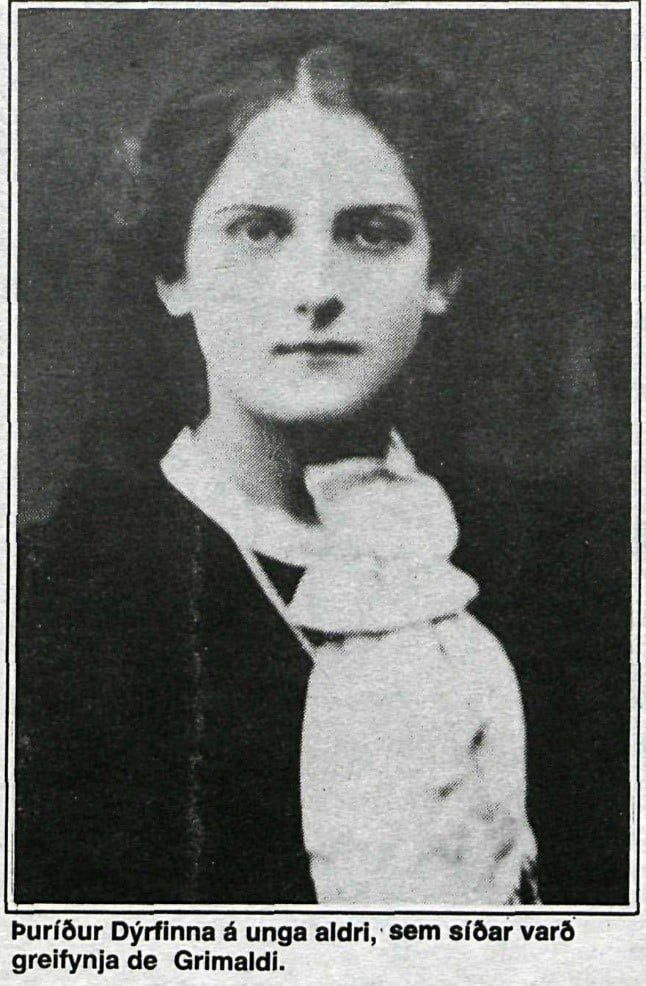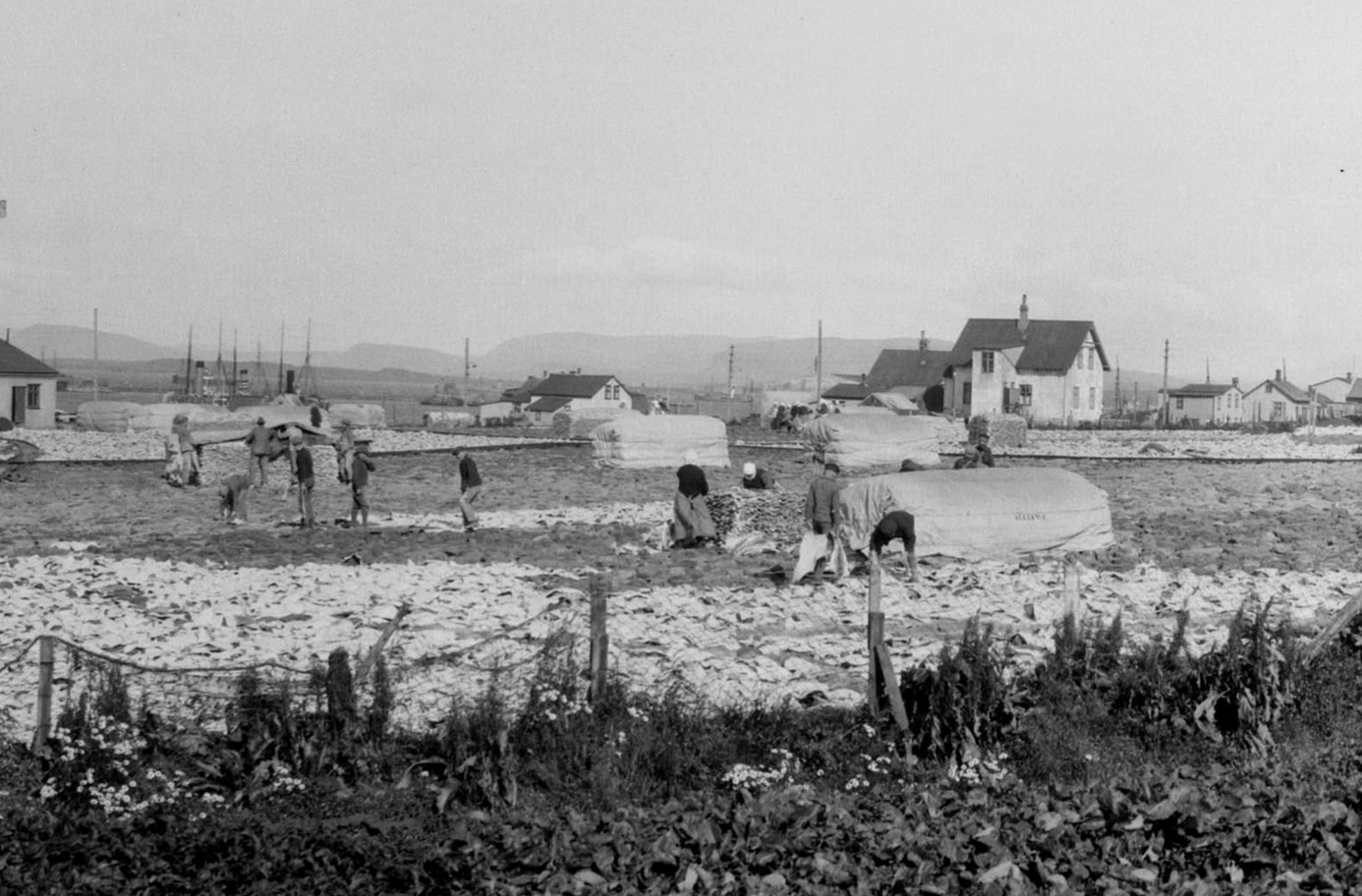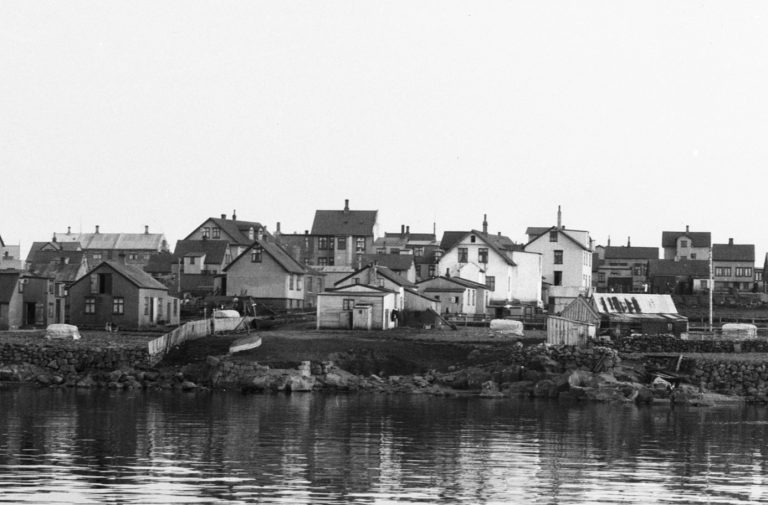
Garðhús c. 1946. To the left of the house is the Reykjavík Freezing Plant, and to the right part of the Daníelsslippur shipyard.This half-stone house is named Garðhús. Half-stone houses were a new form of building in 19th-century Iceland, which replaced traditional turf dwellings in many coastal communities. The characteristic feature of the half-stone house is that it has long walls of cut stone, instead of traditional turf walls. Many such buildings were constructed in Iceland until the early 20th century, but few remain standing. Few changes were made to Garðhús over the years, although extensions have been added, altered, and demolished. Garðhús was built in 1884 by fisherman Bjarni Oddsson, who later became a harbour pilot. His wife was Þuríður Eyjólfsdóttir, who had a reputation for intelligence and strong character.

The couple‘s granddaughter, Þuríður Dýrfinna Þorbjarnardóttir, was born in Garðhús on 30 October 1891. At a young age she was deemed a promising girl, keen to educate herself. In 1912 she graduated from the Women’s College in Reykjavík. Regarded as an unusually good linguist, in the summer of 1921 she worked at Hotel Skjaldbreið in Reykjavík, dealing with foreign visitors. Among them was the Marquis Henri Charles Raoul de Grimaldi d‘Antibes et de Cagne, a member of one of Europe‘s oldest princely dynasties, of which the Monaco royal family is a branch.
Þuríður and Henri fell in love, and were married in Reykjavík in October 1921. The wedding received extensive press coverage: it was rare for people of such noble birth to visit Iceland – let alone marry an Icelander. As the Marquis was Catholic, the wedding took place in the Catholic Church of the Sacred Heart at Landakot. The couple left Iceland later that year aboard the liner Gullfoss, travelling to Lisbon in Portugal, where the Marquis owned extensive property.
In the second year of her marriage Þuríður fell ill with tuberculosis. She travelled widely in search of a cure, including Belgium, where she died on 10 October 1925, aged only 33. She was buried in Brussels, where her grave bears the arms of the Grimaldis.

Historical markers in Reykjavík
In recent years the City of Reykjavík has been installing historical markers around the city. Such markers at historic sites and areas within Reykjavík enrich the experience of both residents and visitors, and provide information on the city‘s culture and history. The markers display information about history, art, literature and social life relating to the site in question, accompanied by pictures.
Text and photos: Reykjavík City Museum
See further at www.reykjavikcitymuseum.is




